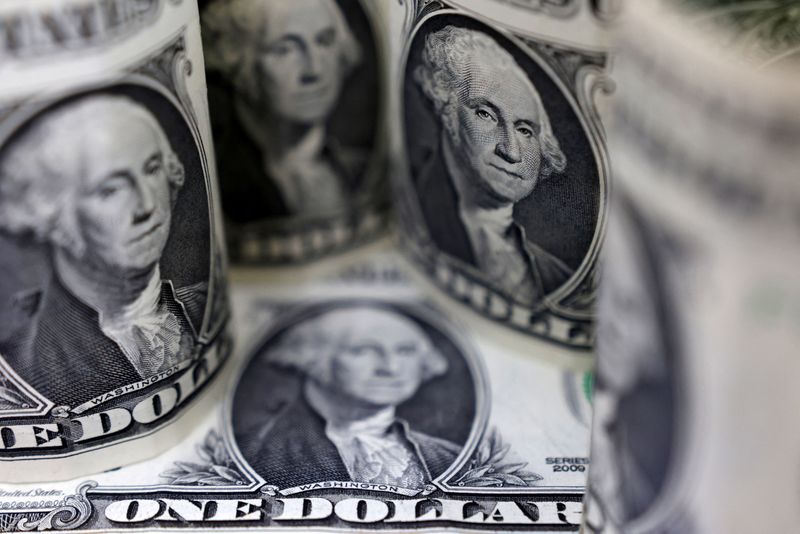
By Rae Wee
SINGAPORE (Reuters) -The New Zealand dollar made solid gains on Thursday in the wake of an upbeat business outlook survey, while the U.S. dollar failed to sustain its bounce in the run up to a key U.S. inflation reading at the end of the week.
Friday’s release of the core personal consumption expenditures (PCE) price index – the Federal Reserve’s preferred measure of inflation – headlines a week that’s otherwise been lacking on major market moving data, leaving currencies mostly rangebound.
Still, the kiwi was a notable outperformer in the Asian session, scaling an eight-month top $0.6295 after a survey out on Thursday showed New Zealand’s business confidence jumped in August to the highest level in a decade. It was last up 0.73% at $0.6291.
“Business confidence has lifted sharply in the wake of the Reserve Bank’s turnaround on monetary policy,” said Michael Gordon, a senior economist at Westpac in New Zealand.
The Reserve Bank of New Zealand had earlier this month delivered its first rate cut in over four years and signalled more to come.
“We wouldn’t suggest that a single OCR (official cash rate) cut could make this degree of difference to the economic outlook. Rather, we think this shows how downbeat firms had become earlier in the year,” said Gordon.
In the broader market, the dollar was struggling to find a floor, after having risen 0.48% in the previous session which analysts partially attributed to month-end demand.
The euro inched back toward its 13-month high and last bought $1.1135. Sterling rose 0.14% to $1.3209 and was not far from Tuesday’s peak of $1.3269, its strongest level since March 2022.
The Australian dollar hovered near an eight-month top, gaining 0.27% to $0.6803.
“PCE is definitely this week’s most important print in the U.S., but I doubt it will materially move market expectations for FOMC policy unless there is a significant miss,” said Carol Kong, a currency strategist at Commonwealth Bank of Australia (OTC:CMWAY).
Markets have fully priced in a 25-basis-point rate cut from the Fed next month, with a 34.5% chance of an outsized 50bp reduction, according to the CME FedWatch tool.
Investor bets for imminent U.S. rate cuts were further cemented by Fed Chair Jerome Powell’s remarks at Jackson Hole last week that the “time has come” to cut rates, joining a chorus of Fed policymakers who have signalled the same in recent times.
The prospect of lower U.S. rates next month has toppled the dollar, which had, for the most part of the past two years, been boosted by the Fed’s aggressive tightening cycle and expectations of how much higher rates could rise.
The greenback has since fallen some 2.9% for the month thus far, putting it on track for its steepest monthly decline in nine months.
The dollar index was last 0.07% lower at 100.94, having fallen to a 13-month low of 100.51 on Tuesday.
The yen was little changed at 144.67 per dollar and was eyeing a 3.7% gain for the month.

Contrasting with an imminent Fed easing cycle, policymakers at the Bank of Japan (BOJ) have signalled that the central bank would continue to raise interest rates if inflation stayed on course, offering some relief to the Japanese currency which had come under immense pressure owing to stark interest rate differentials.
“With the Fed now closer to cutting rates and the BOJ normalising still-negative real policy rates, the USD/JPY should decline closer to its fair value of around 135,” said strategists at Lombard Odier in a note.
This post is originally published on INVESTING.


